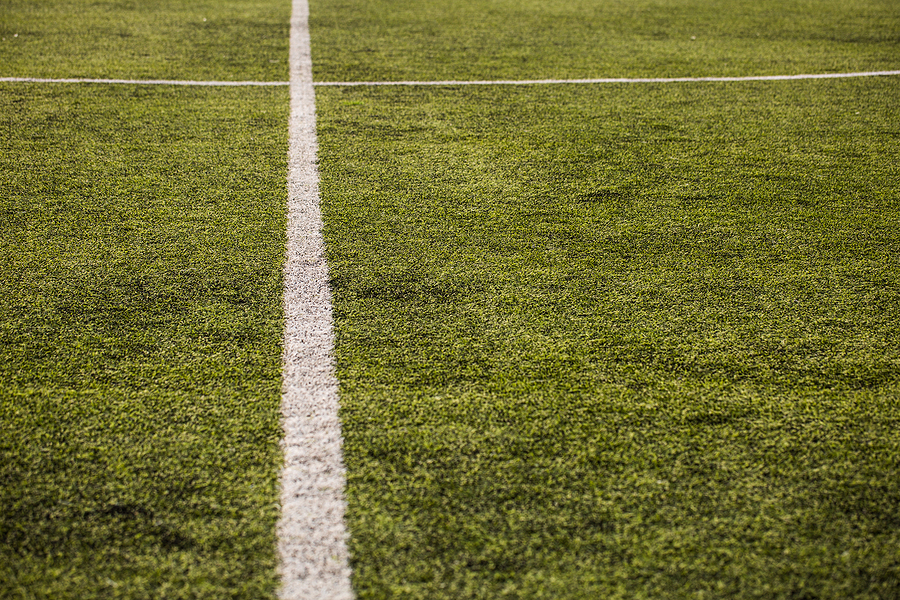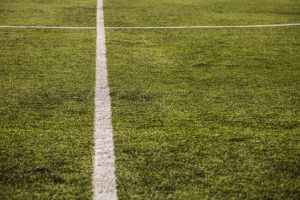
13 Aug Making Your Turf Safe for Athletes
 Which turf do you prefer for athletic fields: artificial or natural grass? Though some feel artificial is the winner due to its low maintenance and cost savings, natural grass fields have many winning qualities. Installation costs are low (if at all) and many consider it the safer surface of the two for athletes—which, in the end, should be the number one priority for athletic facility managers (not only to make sure no one gets hurt, but the facility is liable if there’s an injury).
Which turf do you prefer for athletic fields: artificial or natural grass? Though some feel artificial is the winner due to its low maintenance and cost savings, natural grass fields have many winning qualities. Installation costs are low (if at all) and many consider it the safer surface of the two for athletes—which, in the end, should be the number one priority for athletic facility managers (not only to make sure no one gets hurt, but the facility is liable if there’s an injury).
But ensuring a field is safe is no easy feat. In fact, it can be quite a challenge at times with all the variants involved. So to help you out, here are some common hazards managers face and some tips on how to deal with them.
High-Wear Areas
This is probably the most common problem—areas that experience high-traffic and use so the grass is damaged, or in some cases, gone, leaving just soil and dry dirt. Worn areas are troublesome because they provide little cushion and are difficult for athletes to gain traction.
Solutions: Sometimes, the problem is compacted soil, so if you’re able to adjust the field layout, you can give the area some rest and aerate the location. Restricting usage also helps, followed by seeding and increased mowing. You may also want to consider a soil testing and analysis to determine if the problem runs deeper than the surface.
The Wicked Weeds
There is nothing good about crabgrass and weeds, especially when they’re located on an natural grass athletic field. They are troublesome to athletes, causing unstable ground and no stability. In addition, they tend to take over the surrounding turfgrass.
Solutions: Herbicides will obviously do the trick, but there are alternative options if you’d prefer not to use these applications. You can conduct soil testing in order to adjust the conditions to correct any nutrient deficiencies. Another suggestion is to increase mowing height—to hide the weeds from the sun—and/or water more frequently (weeds like dry soil).
Water Can be Worrying
Field drainage is a constant worry for athletic field managers. If it’s poor, it results in muddy areas and standing water, making the field unusable at times. It’s just too slippery and unsafe for athletes. I know, managers are tempted to just allow one game to occur in wet conditions, under coach pressure, but you’re headed for disaster if you do that. One game on a too-wet field can ruin months of hard work.
Solutions: There’s no way around it—you have to restrict usage when it’s thoroughly wet. For the safety of the athletes AND of the turfgrass. Once the problematic areas are identified, you can try to level the surface and use topdressing. Aeration and construction might also be considerations if it’s regular issue.
Making Matters Worse
There are a few other things to consider in making sure your turfgrass is safe for athletic use:
- Uniformity: If your turfgrass is uneven, or has holes or trenches, that’s a tripping hazard for athletes. Fill them in and then seed and mow carefully.
- Sports Equipment: Goals, benches, and base coverings are all needed pieces for an event—but they affect the turfgrass too. Just make sure they are installed correctly and are securely in the ground, with no sharp protrusions.
- Surrounding Areas: It’s important to not only maintain the field itself, but at least 25 feet around the area in case of long balls, homeruns, etc. That includes stands for fans and fences. Again, just make sure they are properly maintained and safe for use.
Soil & Water Consulting Can Help You Make Your Turfgrass Safe
To help you manage a natural grass field that is safe for athletes, Soil & Water Consulting has the solutions. We can examine your turfgrass, conduct soil testing, asses your current maintenance plan, and help you come up with strategy so everyone—from the athletic directors and coaches, to the players and administrators—are happy and feel safe.


